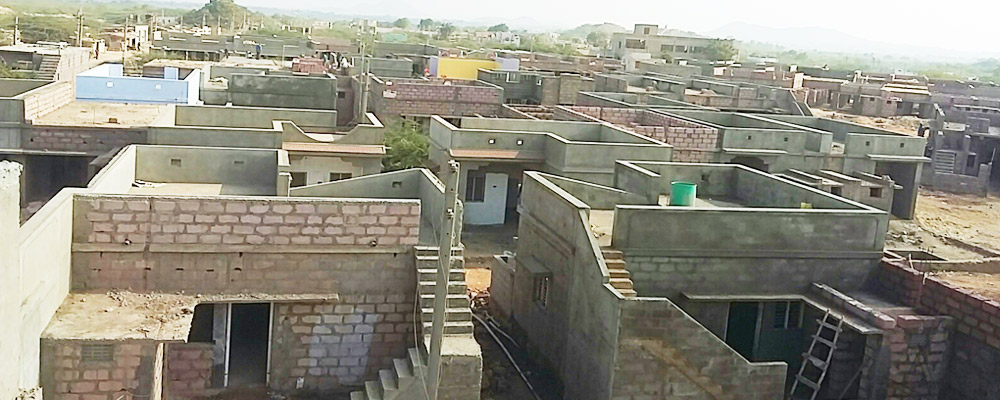While cities are the generators of the nation’s wealth, there are large sections of the poor in cities, especially slum dwellers, who are bypassed by the process of growth. The urban areas are rapidly becoming areas of crowded habitation without basic amenities. This gets reflected in an increasing proportion of slum population which constituted one-third of the urban population. Urban poor have a significant role in economic growth of city and so as to nation’s GDP.
The growing urbanization has led to problems of land shortage, housing shortfall, congested transit development, and has also severely affected basic services of water, power and open spaces in towns and cities. This has resulted in people increasingly living in informal and squatter settlements and has deteriorated housing conditions of economically weaker sections of the society. This is primarily due to skyrocketing prices of land and real estate in urban areas that have forced urban poor to occupy the marginal lands. Slum manifests the worst form of deprivation that transcends income poverty. They are characterized by acute over-crowding, unsanitary, unhealthy and dehumanizing living conditions. They are subject to precarious land tenure, lack of access to basic minimum civic services such as safe drinking water, sanitation storm drainage, solid waste management, internal and approach roads, street lighting, education and healthcare, and poor quality of shelter. Many of these habitations are located in environmentally fragile and dangerous sites. Often civic bodies don’t provide the required municipal services in slums on the plea that these are developed illegally on public lands.Recognising the plight of the slum dwellers, accounting for about one-third of the urban population globally, the United Nations Millennium Declaration 2000 recognizes the critical need for national governments to focus on slums and urban poverty situation as part of their national development strategies. India is a signatory to the UN Millennium Declaration covering the Millennium Development Goals (MGDs).
The Indian Government has formulated many policies for housing since the late eighties including the National Housing Policy of 1998. Additionally, many bodies like the National Housing Board (NHB) and Housing and Urban Development Corporation (HUDCO) have also been created to facilitate the implementation of such policies.
Jawaharlal Nehru Urban Renewal Mission (JNNURM) aimed to construct 1.5 million houses for the urban poor in the mission period (2005-12) in the 65 mission cities. Two policies – Integrated Housing and Slum Development Programme (IHSDP) and Basic Services to Urban Poor (BSUP) – aims at providing entitlements such as security of tenure, affordable housing, and services such as water, sanitation, health, education and social security to low-income segments.
The first specific policy to urban housing was the National Urban Housing and Habitat Policy in 2007. Further, Affordable Housing in Partnership, a market-based approach by involving private players was initiated in 2013.
Rajiv AwasYojna (RAY), 2012 aimed at providing affordable housing to the urban poor in May 2015. RAY was rolled over into the Housing for All by 2022 policy.
Till November 2016, Government of Gujarat has built 1,21,487 houses whereas 7,028 houses were under construction under BSUP and IHSDP. There were 676 houses were completed and 8,772 were under construction under RAY. Total completed and under construction houses were 8,923 and 7,407 respectively under Affordable Housing in Partnership.
Bhuj, a medium size town, having the population of 1.48 lakh (2011) has also been executed RAY in three slum settlements and now taken-up under HFA programme with the objective to provide decent housing to citizens.
PROCESS FOR COMMUNITY HOUSING

